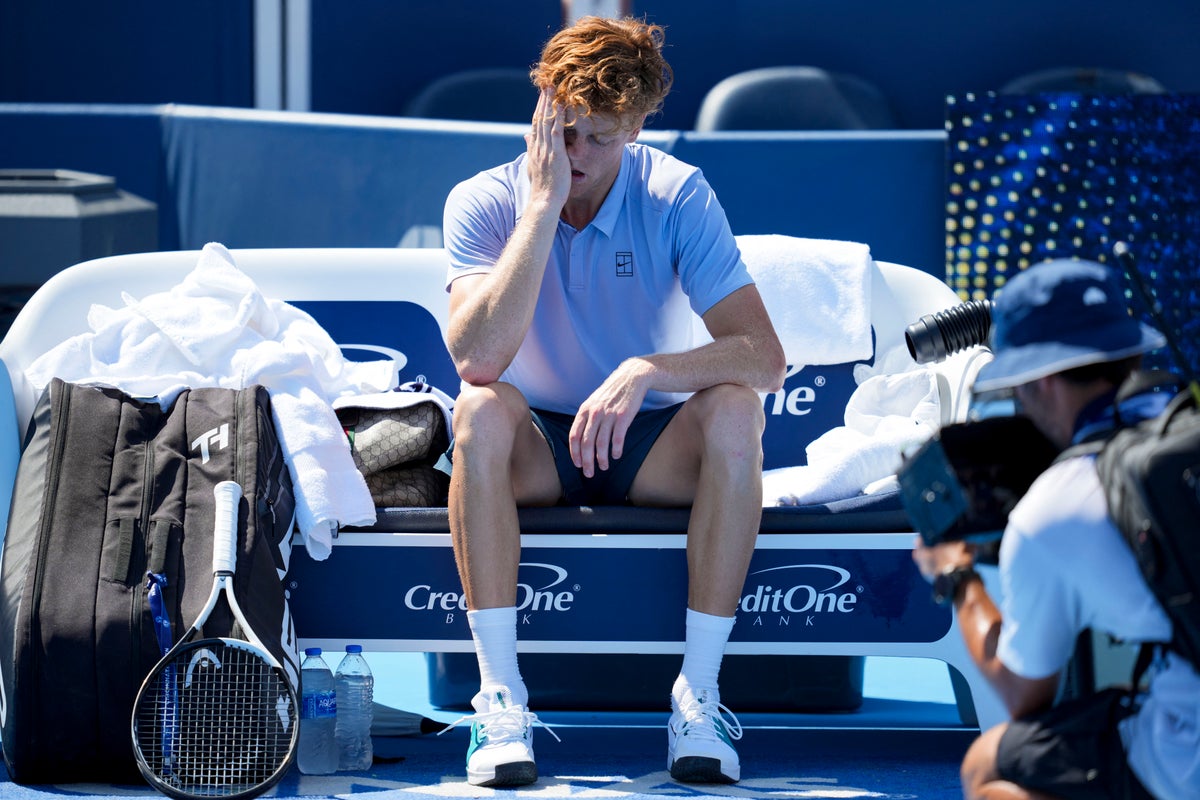The tennis world held its breath as Jannik Sinner, the top-ranked player, abruptly retired from the Cincinnati Open final against his formidable rival, Carlos Alcaraz. His face pale, movements sluggish, and energy seemingly zapped, Sinner`s body language spoke volumes even before he whispered the decisive words to ATP medical staff: “I`m too sick, I can`t move.”
The Unforeseen Exit
Just 23 minutes into the match, with Alcaraz leading 5-0 in the first set, Sinner`s early exit left fans and commentators speculating. In his post-match comments, the Italian maestro kept details vague, stating only that he had felt unwell since the previous day and that his condition had unfortunately deteriorated overnight. A true mystery, perhaps, or a simple case of a body crying uncle?
Hunting for the Cause: The Viral Suspect
While initial whispers might have leaned towards a physical injury or a bout of food poisoning, the prevailing consensus points to a less dramatic, yet equally debilitating culprit: a virus. On court, Sinner appeared utterly drained, subdued as if ambushed by an unwelcome guest that decided to make a grand entrance precisely during a major final. He is now set to undergo further examinations and will observe a couple of days of strict rest, a vital pause before the next major challenge.
Cincinnati`s Crucible: Heat and Humidity`s Role
The precise origins of this `unwanted guest` remain elusive, yet the brutal conditions in Cincinnati are widely believed to have played a significant role. Sinner himself remarked during the trophy ceremony – a rather ironic occasion for such a statement, given his absence from the actual play – that it was “one of the hottest tournaments we`ve played, perhaps the hottest ever.” Indeed, the Ohio summer air, thick with humidity, coupled with the stark contrast of air-conditioned player lounges, created a relentless physiological challenge.
The Extended Gauntlet and Contagion
Adding another layer to this environmental challenge was the tournament`s extended format. With the Cincinnati Open upgraded to a 12-day event, players spent an additional week navigating these extreme conditions within the revamped facilities. This prolonged exposure was, by many accounts, “deadly” for athlete resilience. If a virus truly was the cause, it’s plausible Sinner contracted it from one of the many other athletes who reportedly struggled with various ailments and even withdrawals throughout the tournament. It appears the Cincinnati “bug” was making its rounds, seemingly indifferent to rankings or aspirations.
Looking Ahead: Recovery and the Road to New York
Having already arrived in New York via private jet, Sinner`s immediate focus is on absolute rest. This unfortunate turn of events has, predictably, led to his official withdrawal from any planned mixed doubles appearances – a small sacrifice, perhaps, but a clear sign of the need for full recovery. As the tennis world looks towards the upcoming US Open, Sinner`s health will undoubtedly be a paramount concern for his fans and competitors alike. One can only hope that his `unwelcome guest` decides to check out for good before Flushing Meadows calls.
In the high-stakes world of professional tennis, physical prowess is only half the battle. As Sinner`s withdrawal starkly illustrates, sometimes the most formidable opponent isn`t across the net, but an invisible foe within, exacerbated by the very conditions designed to test human limits.

